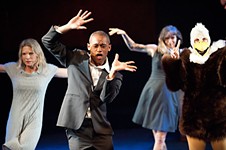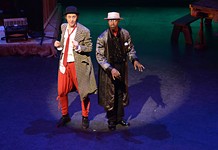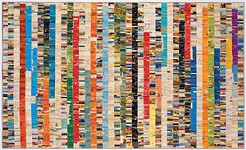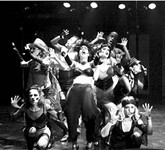Touch
Local Arts Reviews
Reviewed by Molly Beth Brenner, Fri., April 18, 2003
Touch: Moving in Many Ways
Bass Concert Hall, April 4
Some dance works are outstanding because the performers' sheer ability whisks you out of yourself and into the realm of awe and wonder. Some pieces stand out because their choreography presents a fresh perspective on the human body's relationship to other bodies in space. And then there are pieces that have both stunning choreography and dancing, but also seem to open a level of emotional connection with the audience that's more direct than even language-based works of art. Ballet Austin's Touch, choreographed by Artistic Director Stephen Mills, was one of these rare productions. During the three dances that made up the evening, I was alternately energized, touched, and transported to that place of awe inhabited by performances of great beauty.
The evening's three pieces were markedly different in tone, but all were stamped with Mills' distinctive choreographic style, a blend of ordinary human gesture, modern dance, and traditional ballet. The first piece, "She Was," took place in the shadow of huge, winglike screens surrounding the dancers, on which film of nature scenes by multimedia artist Marc Rosenthal was projected. Close-ups of velvety purple pansies glowed behind a lovers' duet, in which graceful lifts were sprinkled with simple caresses; clouds raced across the sky while dancers agitated in arrhythmic echoes of movement, to Philip Hamilton's haunting original music. The second piece, "One/The body's grace," was a trio of breathtaking duets on a bare stage, with simple, classic lighting by Tony Tucci and music by Handel, Gluck, and J.S. Bach. At one point, the dancers engaged in a sort of musical chairs with their partners, bringing to my mind the six degrees of separation that are said to divide (and connect) us all. The title piece, "Touch," took place in a sparse, desertlike world; with a black dune in the background, groups of dancers sped in patterns of movement that reminded me of pedestrian traffic on a busy street.
The continuity of all the pieces was punctuated by dancers' bodies suddenly ceasing in midmotion, like robots switched off abruptly. At these moments, other dancers would pick up the stalled bodies and move them aside. Added to the synthetic-yet-natural effect of the lush nature footage as a backdrop, this curious stalling out of bodies gave me the sense that natural and manmade worlds were colliding. At one moment it seemed we were watching beautifully articulated androids in a technologically enhanced, better-than-real environment; at the next, the dancers became all-too-human beings, whose momentary hesitations made them pause in midaction, unsure how to proceed. Although the non-narrative nature of the pieces allowed me to make whatever interpretations I chose, the human frailty implicit in the dancers' truncated movements, along with the everyday gestures that broke through the surface of the dance, were somehow moving in a way that words can't effectively capture. Thought provoking and beautifully executed, Touch contained an emotional efficiency that's rare even in word-based works of art.










